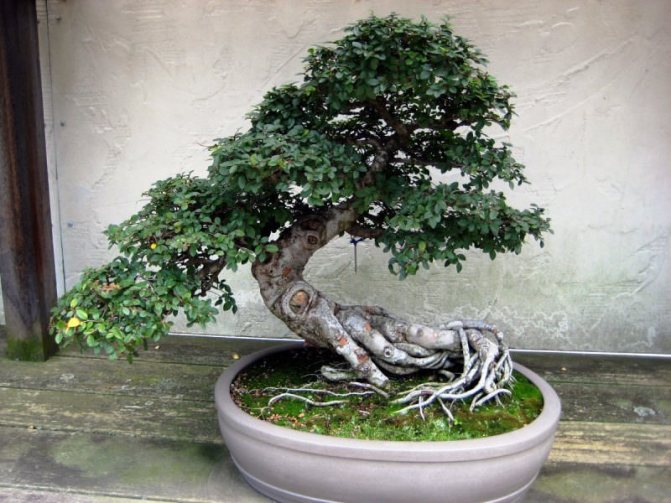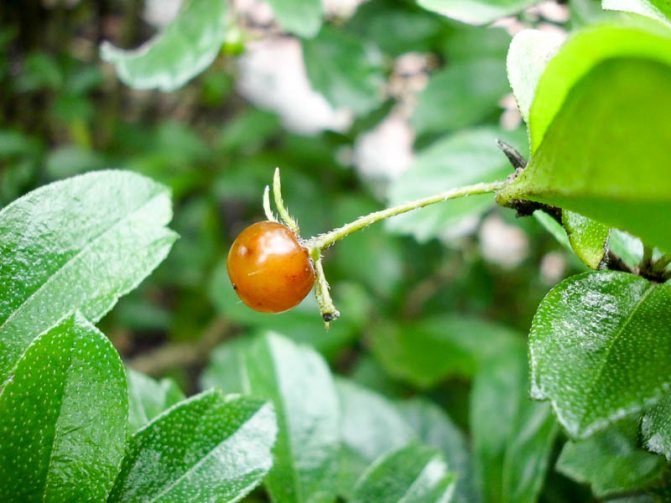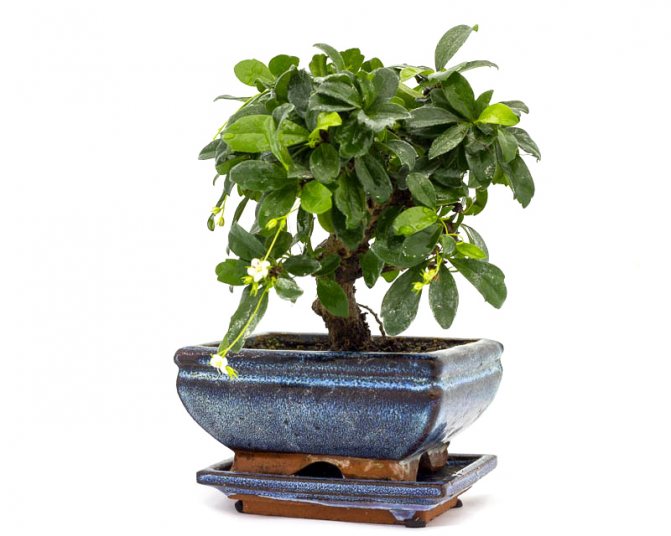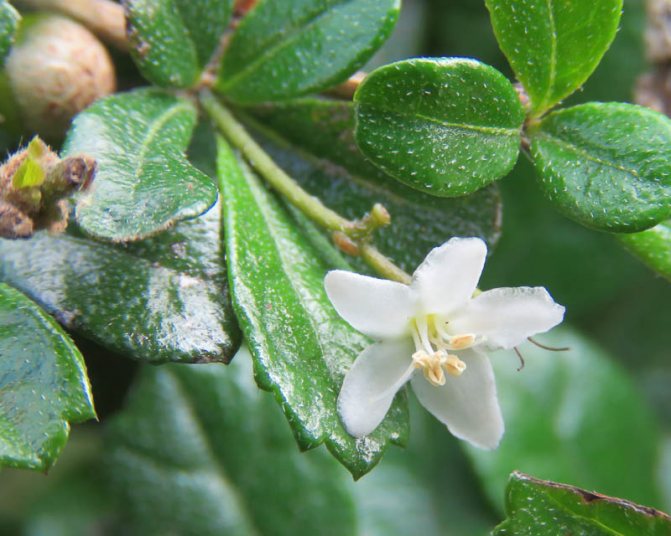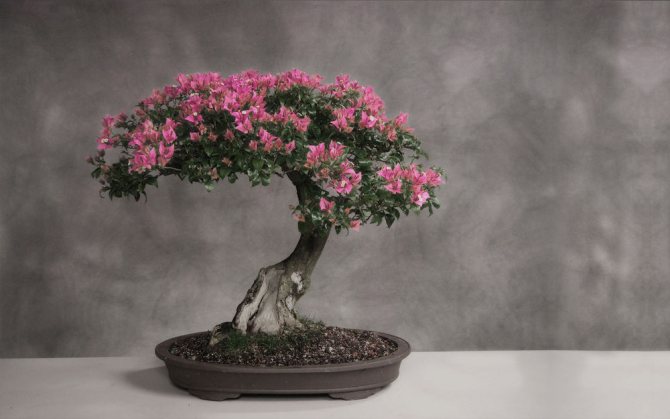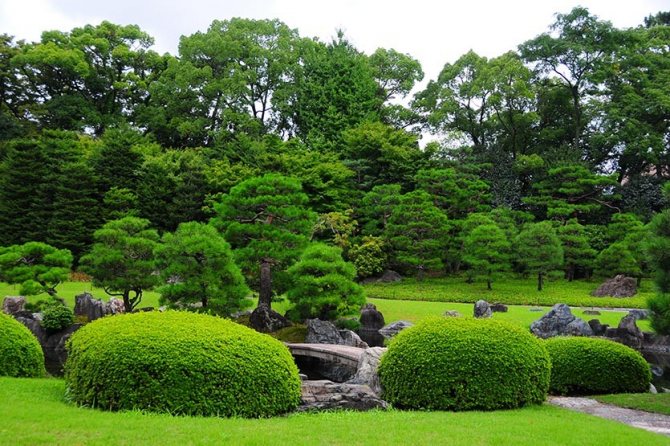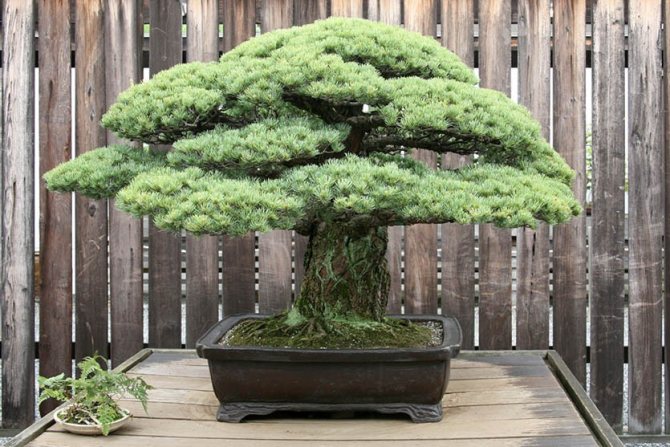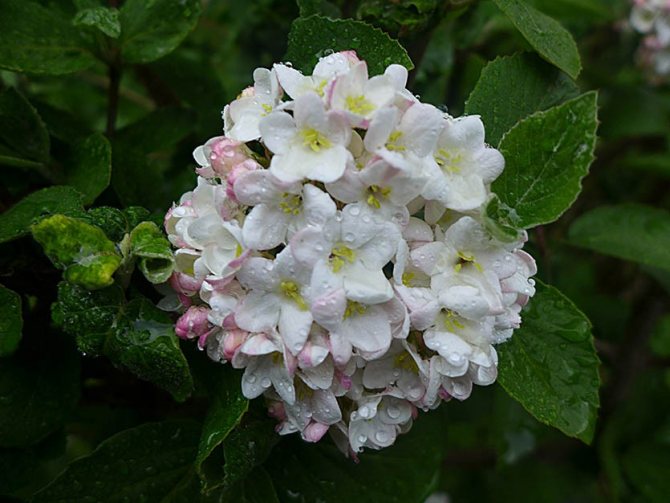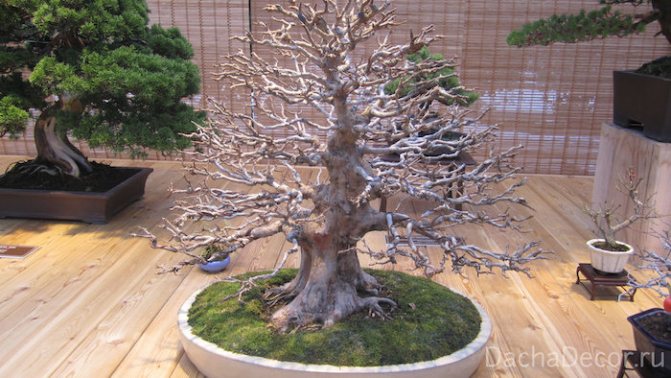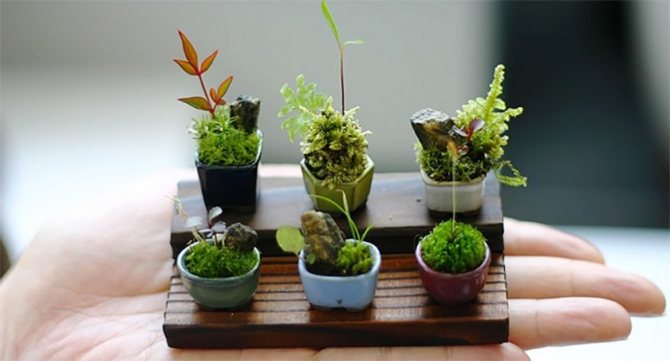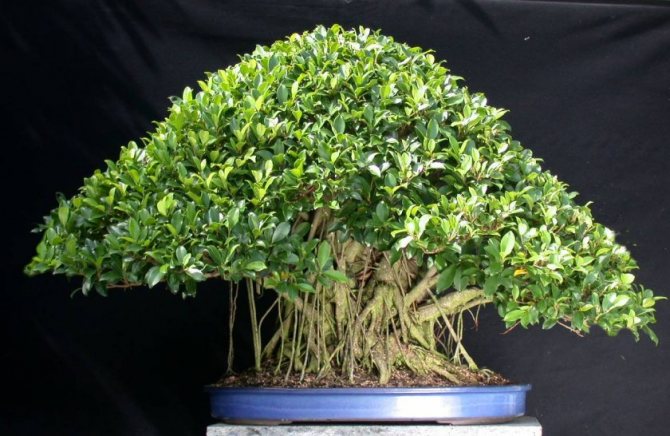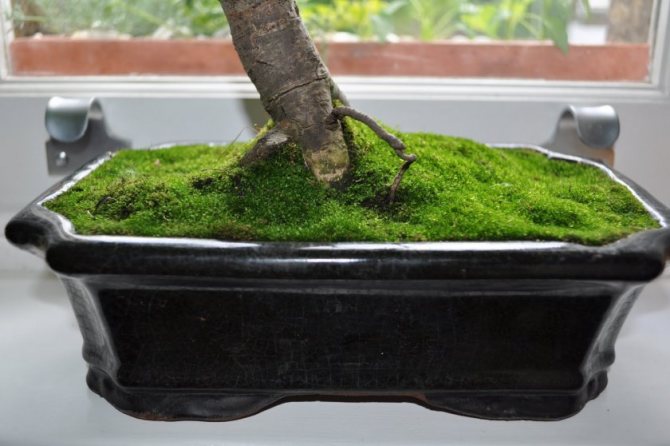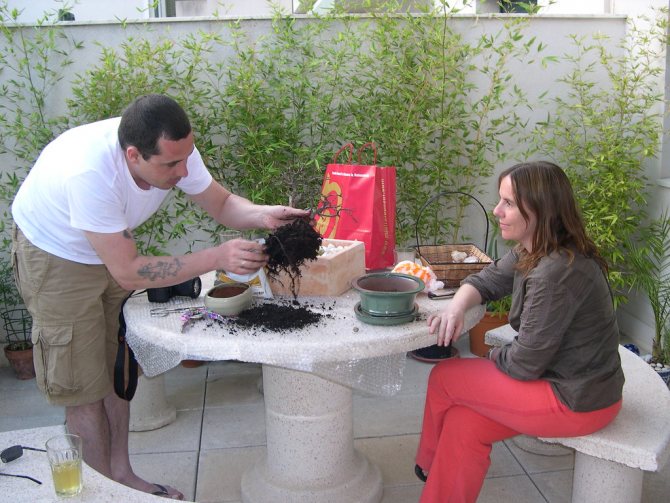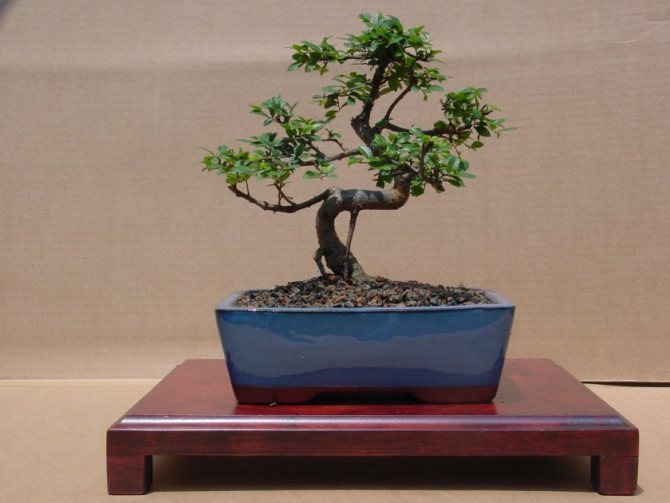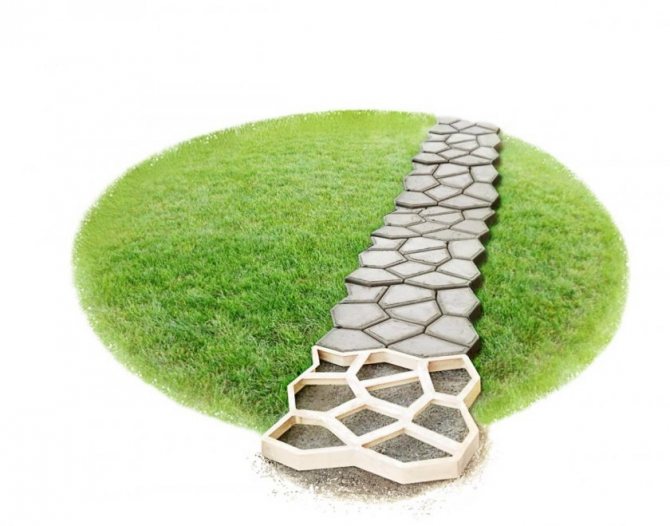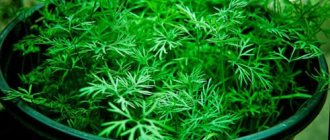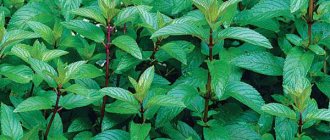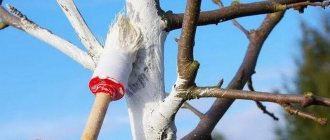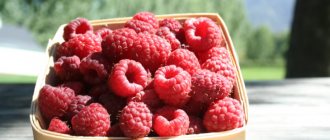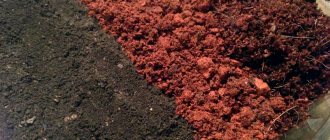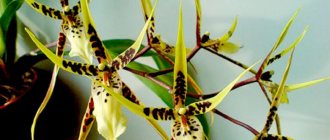Home | Useful Articles | Dwarf Trees for Home [Expert Selection & Tips] 2019
Date: 22 April 2019
Comments: 0
5 / 5 ( 1 vote)
Indoor plants are always in fashion, only their exoticism changes. The usual violet will not fit into a modern and trendy interior, and therefore designers began to pay attention to dwarf trees.
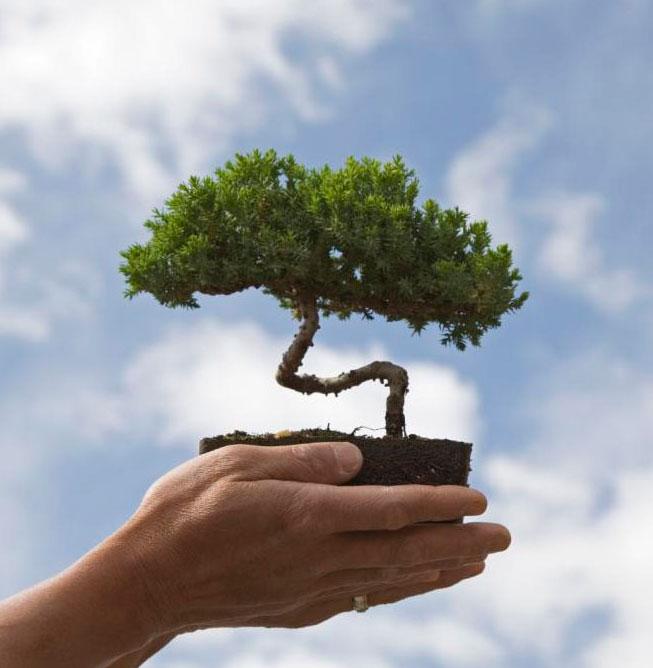
All representatives of this species look unusual and stylish, and most importantly, they give the room comfort and freshness. But there are many nuances in caring for such plants, and they will be discussed in this article.
Location, lighting, air temperature
Small-leaved carmona is a heat-loving plant. In the summer, it is very beneficial to keep the carmona outdoors in partial shade. If this is not possible, then provide her with more fresh air without drafts, a bright place without direct midday sunlight. Drafts should be avoided at all times, both in winter and summer.
Western or eastern windows are best suited for her in the summer, but in winter it is quite possible to put carmona on the south window, there it will be both warmer and lighter. In general, even in winter karmona, natural light is quite enough - 2-3 hours a day of diffused sunlight, but if there is additional lighting, it is always "for")). Remember that sufficient light will encourage karmona to bloom year-round.
If the karmona was outdoors in summer, do not forget to bring it into the room in time. It is best to do this in mid-August, when the air temperature outside and in the room is the same. Because small-leaved karmona is very sensitive to sudden changes in air temperature. This will save the plant from additional acclimatization, during which the leaves may turn yellow and crumble. And although they grow back, it gives a lot of experience.
In winter, small-leaved carmona is kept in a warm room with an air temperature of at least + 18oС, which should remain constant, not drop. Lowering the air temperature to + 10 + 15oС will stop the growth of the plant, and at + 5oС the plant will die.
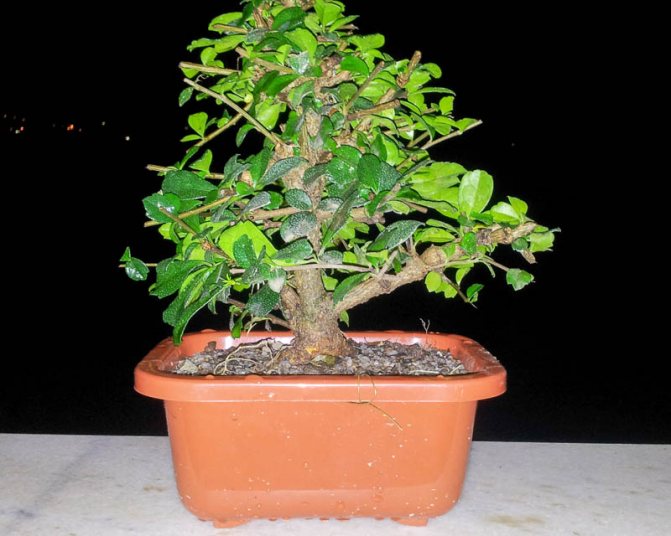

Style selection
The main styles of bonsai art are:
- Chokkan (Chokkan) or straight vertical. This is a classic style where a perfectly straight barrel tapers towards the top. Surface roots must be present in this composition. Which will create a picture of a lonely tree on a calm plain. Since there are practically no perfectly straight trunks in nature, it is very difficult to create such a shape.
- Moyogi (Moyogy) or curved vertical. This shape is very easy to create. Bend the bonsai from the base and usually make 2-3 bends. The top of the tree should be strictly vertical.
- Shakan (Shakan) or tilt. This style represents heavily bent trees. All branches are directed in one direction, as if a strong wind was blowing on them.
- Sokan (Sokan) or two barrels. There are two trunks in this composition. Trees of different heights look spectacular, but merging into one crown.


Chokkan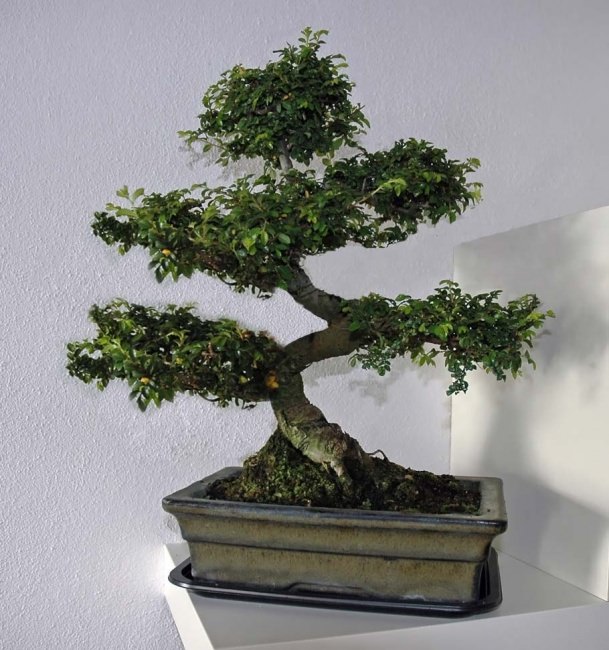

Moyogy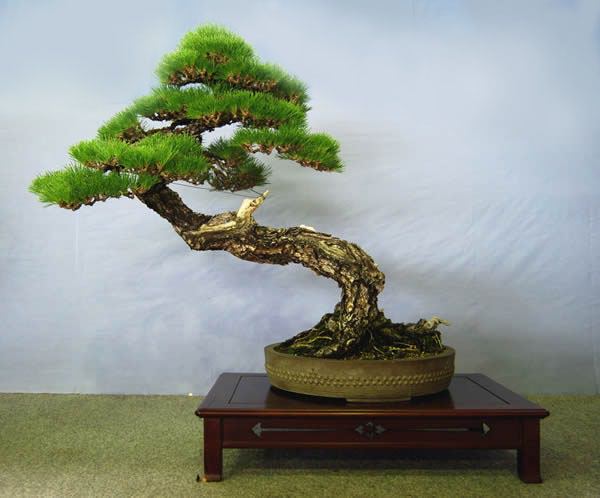

Shakan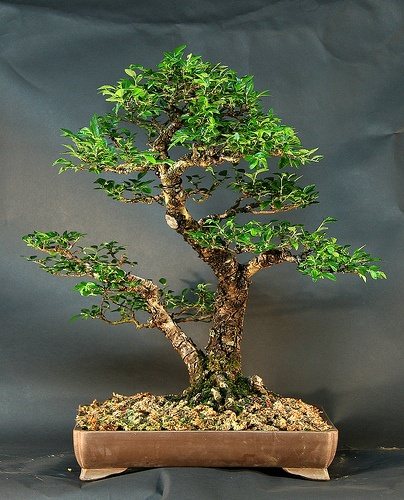

Sokan

Kengai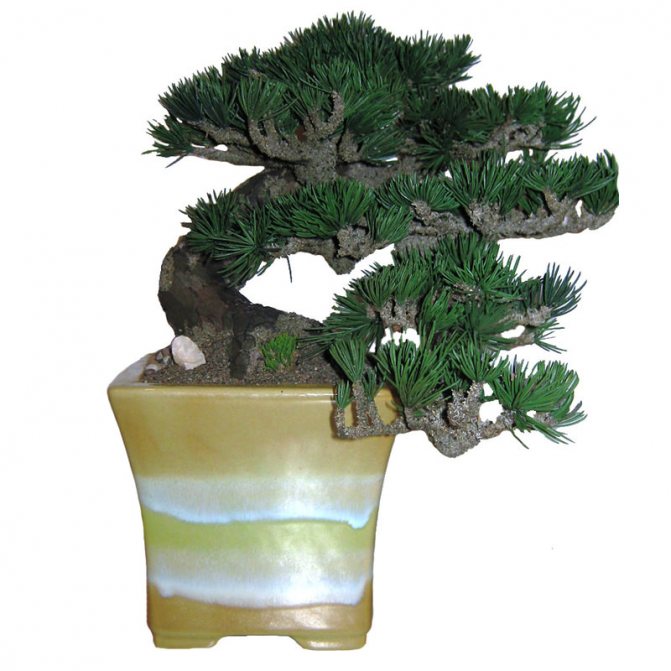

Han-Kegai

Hokidachi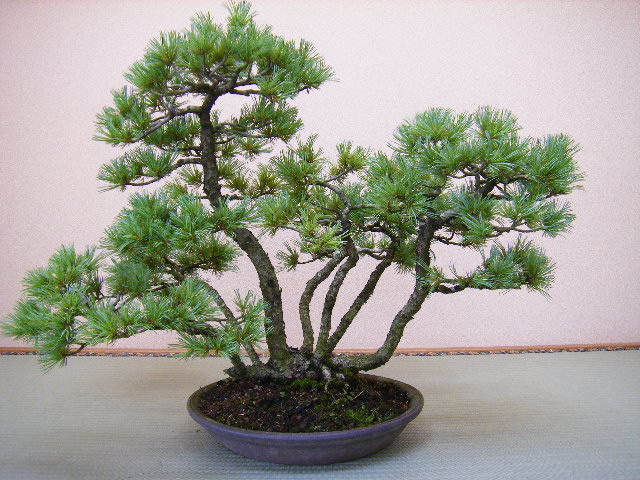

Youse-ue - Kengai (Kengai) or cascade. In this style, the tree trunk is pointing downwards, so the pot should be placed on a shelf. Since the tree always grows upwards, this style is very time consuming.This bonsai is like a tree growing alone on a mountain or near a pond.
- Khan-kengai (Han-Kegai) or half-cascade. The style differs from the previous one in that the barrel is not bent so much. It is directed slightly horizontally and therefore the top does not drop below the base of the bowl.
- Hokidachi (Hokidachi) or broom. The crown of the trees in this direction looks like a ball, and the trunk remains straight.
- Yose-ue (Youse-ue) or grove. More than 5 trees grow in one pot.
The style must be chosen in the process of growing a miniature tree.
Watering and humidity
Small-leaved carmona needs moderate, uniform moistening of the earthen substrate. For watering and spraying, it is advisable to use soft rain or settled tap water. If you use water directly from the tap for watering and spraying, then very quickly a whitish bloom appears on the surface of the substrate and on the leaves of the karmona, and if the soil in the pot can be changed, then it is very difficult to remove this bloom from small leaves. These spots reduce the decorative effect of the plant.
Moderation in watering is also due to the reasons: karmona does not tolerate waterlogging or drying out of an earthen coma. With a strong waterlogging of the earthy coma, the roots will begin to rot, overdrying the earth is also extremely dangerous: it will already be difficult to save dried carmona.
For uniform watering, venerable bonsaists use special tools. For beginners, you can give some advice: when watering, the pressure of the jet should be very weak, you need to make sure that the water does not flow out of the pot, and the substrate does not wash out. In addition, the substrate must be moistened to the full depth, in all corners of the pot. You can adapt to careful watering in several steps from the spray bottle.
In addition to moderate moistening of the substrate, do not forget about the high humidity of the air - this is an indispensable condition for the well-being of the plant and the preservation of leaves. The air humidity can be increased by occasional spraying, which Karmona loves. But here, too, caution is needed: if the room is cold or a draft, it is better to refuse to spray the crown of the small-leaved karmona - diseases may develop.
And during flowering, make sure that the water does not fall on the flowers, otherwise they immediately turn black, disappear, and it blooms almost constantly. And if the flowers constantly disappear, then the fruits will never be tied. Black rotten flowers must be removed from the plant in time so that they do not become a source of fungal diseases.
But it is also easy to get used to spraying: you can carefully spray closer to the leaves, since the flowers are located on long pedicels protruding above the crown.
But the best solution to maintain constant humidity around the plant would be an additional bowl or tray with water and expanded clay, pebbles, or hydrogel. If expanded clay or pebbles are used as a filler, then so much water is poured into the pan so that it covers the pebbles by 2/3. This is to ensure that water from the sump does not get into the drain hole of the pot. As it evaporates, water must be constantly poured into the pan. With a hydrogel, everything is easier: the balls will absorb all the water into themselves. The only thing is that when you add water, you just need to wait until the water is completely absorbed, and then put the pot of carmona on the tray with the hydrogel.
With such humidification of the air, the number of watering and spraying is significantly reduced. Well, flowers and berries will thrive on the pocket, too, beautifully. It is recommended to keep the pocket on a pallet all year round: both in winter and in summer.
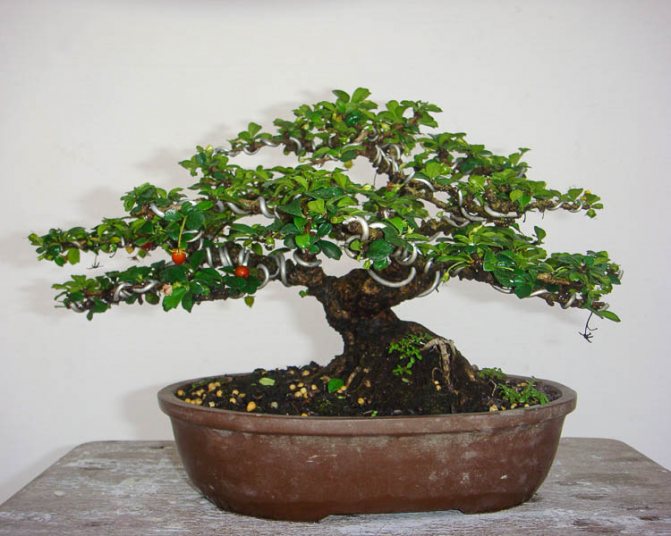

How to plant? Step-by-step instruction
Miniature trees can be grown in several ways. The most difficult and time consuming method is seed germination. It is much easier and faster to get a tree from cuttings.


Stages of growing from seeds
- Seed treatment... The skin is cut or pierced. Either the planting specimen is kept in warm water for a day.
- Soil preparation... It is sifted and disinfected. The composition of the soil is the same as for the permanent cultivation of bonsai.
- Preparing the pot... It is thoroughly washed and filled with earth.
- Sowing... The best time for this process is mid-spring or late summer. Not all seeds will sprout, so they are planted twice as much as required. Small ones sow evenly, and large ones are planted one at a time.
- Greenhouse creation... Sprinkle the seeds on top with soil and cover with glass or film. Direct sunlight should not fall on the mini greenhouse. The soil should be moderately moist. T = 23˚C.
- After the first shoots appear you need to slightly move the glass so that air begins to flow. After 2-3 days, it is removed completely.
- When the leaves appear the plant can begin to dive. For the development of the root system, the tree is transplanted several times. Seedlings are planted at a distance of 4 cm. The trunk with cut roots is deepened into the ground until the first pair of leaves. A month and a half after transplanting, the plant is fertilized.
- Planting in a permanent pot. As soon as the tree gets stronger, it is transplanted into a permanent bowl. Formation begins after 2 years. Bonsai will grow after 5 years.
Growing from cuttings
- Cuttings are carried out in the spring. To do this, choose green and half-stiff shoots, no more than 10 cm long.
- ¼ a deep bowl is filled with drainage and covered with soil. The mixture for the soil is selected according to the type of plant.
- All lower branches of the cutting are removed.
- The soil is moistened and shoots are planted.
- The bowl with the handle is hidden from sunlight.
- After 14 days, shoots will begin to appear. Cuttings that have not grown are thrown away, and the sprouted ones are left to strengthen for a year.
- A year later, the cuttings are transplanted. They begin to form after 2 years.
Top dressing of small-leaved karmona
From early spring to autumn, small-leaved carmon needs to be fed once every two weeks, in winter - once a month, using liquid complex fertilizer for this. If you have fertilizer for bonsai, then great, if not, you can use any other liquid complex fertilizer with a low nitrogen content (nitrogen stimulates the rapid growth of shoots, leaves, and can also provoke rot of roots, shoots, leaves). To be sure that you do not harm, make the concentration of the fertilizer solution weaker than the recommended one.
Before feeding, the plant needs to be watered, this will prevent root burns. After transplanting, top dressing is resumed in a month.
Pot selection
For a complete and harmonious composition, it is important to choose the right pot for your mini-tree.
For a bonsai to look stylish, the height of the container should be equal to 2/3 of the length of the plant.
Better to choose ceramic and well-fired bowls with drainage holes. When choosing a container for bonsai, they are guided by 2 criteria:
- Color pot. In plain brown containers, conifers will look interesting. For flowering plants, bright containers for bonsai are perfect.
- The form pot. Single trees look spectacular in deep oval containers. When creating cascading compositions, it is better to use narrow square and deep bosyatnits. It is advisable to plant a miniature garden in shallow oval containers. Plants with a multi-stem shape or having a dense crown look great in wide and flat containers. If the tree has open roots, then it is better to pick up a deep and narrow pot.
Earth mix
As a new planting soil mixture, clay granulate is best suited, as for kokedama and wabi-kusa, which retains a granular structure for a long time, nutritious humus or leaf earth and coarse sand are mixed with it.
You can make a mixture consisting of clay granulate, sand, dive earth in equal proportions.
In the absence of granulate, ordinary garden soil (loam) or plain clay can be used, provided that the garden soil is clean (no pests) and fertile. Steam or heat the ground before use.
When using ordinary earth or clay, it is advisable to add fine gravel to the mixture in addition to sand. Approximate proportion: sand, gravel, earth (clay) 1: 2: 1.
For karmona, the following composition of an earthen mixture is also suitable: heather soil, sod land, leafy soil and sand (1: 1: 1: 1).
You can use earthy bonsai mix.
A good earthen mixture for karmona is obtained if you take 50% humus, 30% granular sand or perlite, 20% peat.
Carmona can grow even in an inorganic substrate, subject to constant feeding.
Whichever earthen mixture you use, you need to remember that carmona does not tolerate excess lime, which causes the development of chlorosis, but is very good at the content of nutritious organic matter.
For transplanting, only fresh soil should be used, you can not re-take the soil from pots after other plants or from under vegetable crops in order to avoid damage to the karmona by pests and diseases.
The finished earthen mixture should be homogeneous, without lumps and organic residues.


Bonsai soil
The following components are used to prepare the soil:
- Sand... Small and grainy are well suited, because its function is to make the soil loose. River sand must be thoroughly washed and calcined in an oven.
- Clay... It is highly breathable and moisture-absorbing. Thanks to this component, nutrients, especially phosphates, are supplied to the plant evenly.
- Organic additives... This includes peat and coniferous or leafy soil. In order not to infect the plant with the fungus, it is necessary to calcine the additive in the oven for 5 minutes. It is best to harvest the soil from deciduous tree plantings in mid-spring. The layer of leaves that have not rotted over the winter must be removed.
The proportions depend on the type of plant:
- Conifers: Clay - 6 parts;
- Sand - 4 parts.
- Clay - 6 parts;
- Clay - 7 parts;
Transplant of small-leaved karmona
Do I need to transplant the newly acquired carmona? This issue is very acute. Most sources recommend replanting it immediately after purchase, as karmona is imported from China in a land with a high clay content.
When irrigated, such land becomes compacted very quickly and loses the ability to supply the roots with the necessary amount of oxygen, therefore it is advisable to quickly replace the clay soil with a new earthen mixture.
But I have some doubts here. Plants come to us from the Netherlands, already planted in bonsai pots (remember, the plant is positioned for beginners, that is, ready for "use"). And then: (I repeat, this is my personal opinion). Firstly, you need to replace it with almost the same clay substrate. Secondly, immediately after purchase, the conditions for the plant change somewhat, whether we want it or not, it experiences stress, which negatively affects the condition of the plant, leaves may turn yellow and even fall off. The plant needs some time to get used to our care, and we need to adapt to it. And a transplant at this time can only aggravate the condition of the karmona. Thirdly, the soil can be loosened carefully: donate one fork, bend it in the form of a rake and loosen the soil carefully with strong compaction.
And it is better to postpone the transplant to the spring.
Young karmon are transplanted once every 2 years into a special bonsai pot. Older specimens need to be transplanted and even less often - once every 4 years, provided that the plant is watered with settled or soft rainwater.At the bottom of the pot, do not forget to put the mesh on the drainage hole and drainage.
A bonsai transplant means a complete replacement of old soil with cleaning and pruning of roots that form a ball.
But carmona does not tolerate root pruning, so it is done in several stages, that is, during each transplant, only part of the roots is pruned so as not to expose the plant to great stress. In addition, when pruning the roots, the leaves are removed in the same proportion.
After transplanting small-leaved karmona, you need to protect it from drafts and make sure that direct sunlight does not fall on it: it is advisable to slightly shade or set the pot in partial shade.
Variety of bonsai
A flower in a pot has always been considered a great gift for any housewife. A real tree will delight modern fashion lovers. Such plants can be purchased for yourself, especially in specialized stores there is a huge selection that will satisfy the preferences of even the most avid florist. Household trees are divided into several types.
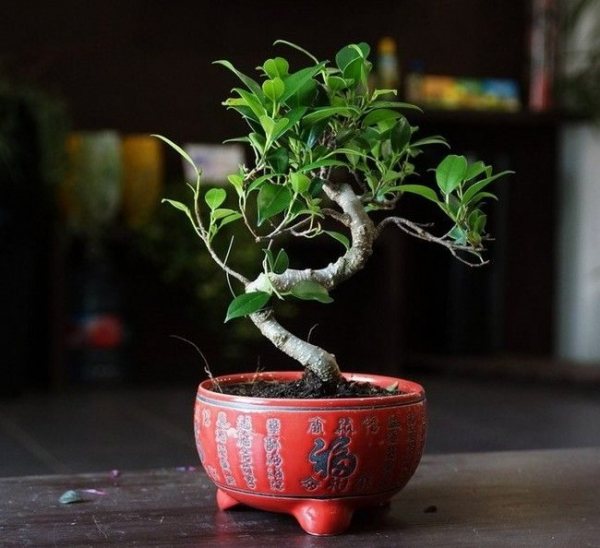

Bred selectively. Through many experiments, a large number of dwarf trees have been bred, which can now be grown at home.
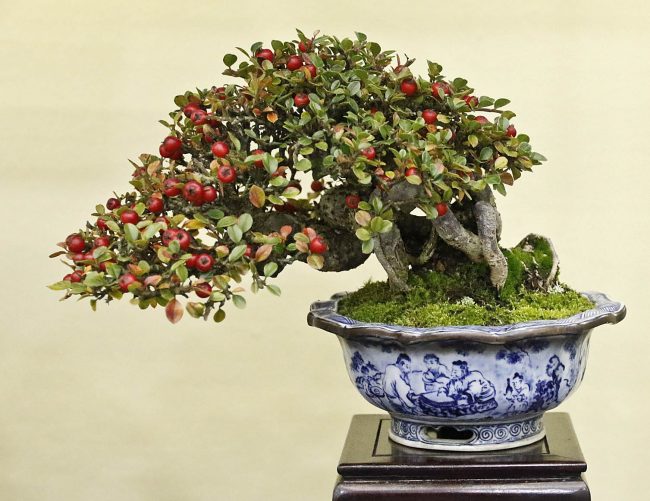

Bonsai are common tree species that have been specially reduced. This is a very expensive pleasure, so that such a tree will please your eye at home, you will have to fork out a lot. This is due to a complex cultivation technology. To achieve some success and get the right plant, experts spend more than one year.
Pruning, shaping the crown of small-leaved karmona
Young shoots of karmona are most often pinched in the spring, although pruning and pinching of karmona shoots can actually be done at any time of the year, especially if the plant is grown as a bonsai. It's just that in the spring there is an intense growth of shoots.
Pruning limits the growth of shoots in height, promotes better branching of shoots and thickening of the trunk. It should be noted that the size of the plant is limited not only by cutting the crown, but also by cutting the roots, as well as by the small size of the pot.
So, if the carmona develops normally, it has a healthy appearance, then unwanted shoots can be removed at any time. Also, dry twigs are removed at any time.
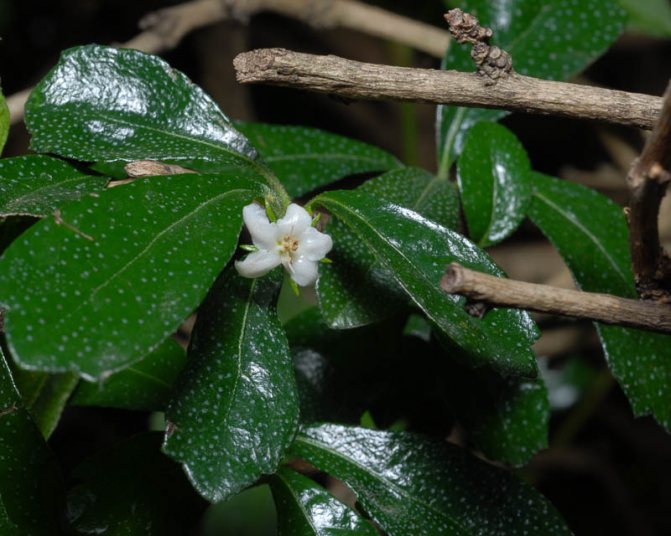

If you bought a large-leaved carmona with an already outlined bonsai style, then you can simply save it or slightly improve it. Small-leaved carmona is usually poorly formed, most often has a small size and a round crown shape. The formation of such a plant will take some time (1-2 years). Any bonsai style can be formed from it.
The direction of one- and two-year-old shoots can be easily changed with a wire. Older shoots can be given the desired position using a tension device that is attached to the edge of the pot. This tool will avoid damage to the tree bark.
When forming a karmona crown in the bonsai style, sometimes it is necessary to severely cut off already stiff shoots 10-20 cm long, shortening them to one or three leaves. In the process of forming the karmona crown, when removing old branches, do not forget to treat the pruning sites with garden pitch for better wound healing, as well as in order to prevent the development of fungal diseases.
Bonsai care rules
Transfer
To maintain the size of the bonsai, not only the crown is cut, but also the root system. This process is carried out when transplanting a tree. It depends on the type of plant when the pruning will be carried out.
Deciduous trees are transplanted in late winter and early spring, and flowering trees in autumn.
You also need to monitor the root system. If it has filled the entire bowl or has sprouted through the drainage holes, then it's time to prune.If this did not happen, and the transplant has already begun, then simply replace the soil in the pot without touching the roots.


Bonsai transplant
Bonsai transplant stages:
- Before removing the plant from the bowl, you need to moisten the soil;
- Remove thick roots with pruning shears;
- Side and side clauses do not need to be cut;
- You can remove 2/3 of the root system, but at the same time trim the crown of the bonsai in the same way;
- Bonsai is early to form if the root is rod-shaped. It is cut by 1/3 and left in the same container until a fibrous system is formed.
- During transplantation, it is recommended to bring thick roots to the surface. This will give the composition a natural look.
- So that the water does not evaporate quickly and the tree looks natural, the ground is covered with green moss.
- The plant adapts in a new pot for about three weeks. This time it is necessary to water it moderately and protect it from rays.
Watering
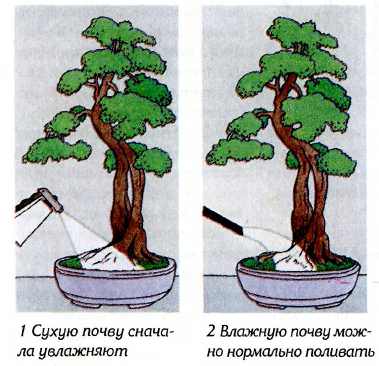

Bonsai watering example
Water for irrigation bonsai should settle for 3 days or be filtered.
If you spray the leaves that are tough and unpeeled, then a white coating will remain on them.
The water temperature should be slightly above room temperature.
Bonsai need to be watered regularly... Periodically immerse the pot of wood in a container filled with water. Cooling of wet soil should not be allowed, therefore, in the cold season, watering is carried out once a week.
In the summer, bonsai should be moistened daily. But these are general recommendations, and each plant species and variety has its own water regime. Deciduous plants are watered more often than conifers.
Moisture is absorbed very quickly if the root system, rather than soil, occupies most of the pot. Therefore, the bonsai is moistened until water begins to pour out of the drainage hole.
The liquid should not be left in the stand, this will lead to rotting of the roots.
Top dressing
To feed small trees, you can use both special nutrients and fertilizing for common indoor plants. In the warm season, bonsai is fertilized weekly, and monthly in winter. You cannot feed the plant with mineral and organic additives at the same time. Better to do this in two steps.
You cannot feed the plants after:
- Flowering;
- Pruning;
- Transplants.
Conifers are fertilized much less often, deciduous ones. Experts recommend keeping a feeding calendar.
Reproduction
Carmona is propagated by seeds and cuttings.
Cuttings of karmona at the age of 1 year, about 10 centimeters long and about 10 mm in diameter, obtained during pruning, are planted in a mini-greenhouse in a peat-sand mixture, maintaining a temperature of about +18 ° C and high air humidity without excessive watering.
When rooting karmona cuttings, rooting stimulants can be used, this will greatly increase the chance and speed up the rooting process.
With the help of cuttings, plants are obtained that completely repeat the characteristics of the mother, with seed propagation this is not always possible.
Short description
Small-leaved elm grows quite quickly, and in natural conditions it can reach a height of up to 15 meters. External data:
- The diameter of a tree trunk reaches a meter.
- The crown is quite rare, resembles a tent in shape.
- The branches are thin, the young tree is lowered down.
- The sheet is up to 5 centimeters long, has a jagged surface at the edges, smooth in the middle. It has a dark green color with gloss. The form can be varied.
- Inflorescences are small, collected in a bunch.
- The tree begins to bloom in late summer and until September. Fruiting begins in late autumn.
If the climate where the tree grows is mild, it will remain green all year round. In winter, when the temperature drops below 5 ° C, the leaves fall off.
Small-leaved elm makes great bonsai in any style. The more common type is broom, oblique or erect. Wood on stone and a cascading style will not suit him.
Diseases
High air humidity and drafts pose a high threat of the development of fungal diseases such as powdery mildew, black spot, septoria, root rot and even trunk rot. Almost all fungal diseases develop with severe waterlogging of the soil. To avoid this, you just need to water properly, do not flood the plant.
If the plant is damaged by a fungus, it is necessary to treat the carmona with fungicide preparations. However, as experience shows, small-leaved carmona is very sensitive to many chemicals for care: not only fungicides, but also insecticides and immediately reacts with yellowing and discarding of leaves.
Therefore, before using this or that drug, you need to test it on one of the carmona shoots. If after a week the leaves do not turn yellow and fall off, the drug can be used on the entire plant. So it is better to use weaker preparations or make a solution of a weak concentration.
Root rot is very dangerous for karmona, up to the death of the plant. If you notice that the leaves turn black, fall off, the earthen mixture does not dry out during the break from one watering to another, that is, there are suspicions that the root system of the karmona has begun to rot. We'll have to transplant it into fresh soil. Carefully remove the plant, remove all soil from the roots, rinse the roots in warm water, inspect the root system: all black diseased roots must be cut to healthy tissue, rinse the cup.
Treat the roots of the carmona in a solution of a root stimulant, for example, root, gerteroauxin, ribav-extra, and plant them in a fresh earthen mixture (weak solutions, remember, right?).
After planting, the soil in the pot can be watered with the same root stimulator solution and the pot with the plant can be placed in a mini-greenhouse (you can simply in a plastic bag) to maintain a constantly high air humidity. When young leaves appear, you can begin to open the bag for a while in order to accustom the plant to open air.
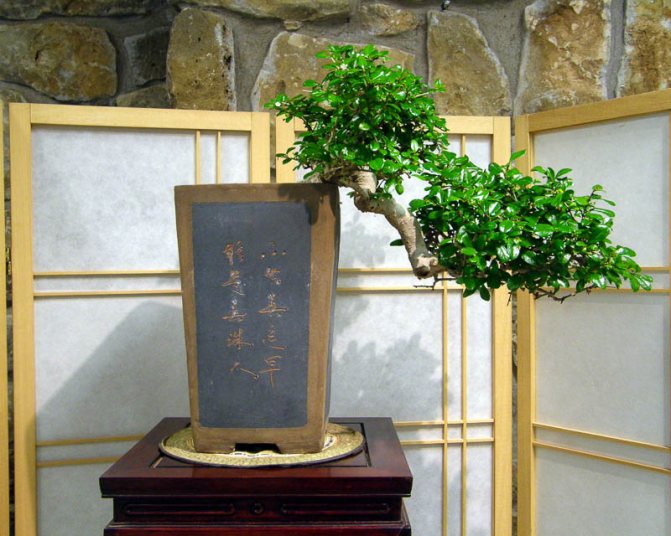

Biological description
Karagach is a tall shrub or tree (12-15 m) with a powerful trunk, reaching 1 m in girth. Sprawling dense crown with a diameter of about 3 m, irregular tent-like shape with thin pubescent branches. Fresh young shoots are glabrous, shiny, reddish-brown in color. The bark on the trunk is dark, grayish-brown, densely covered with small cracks.
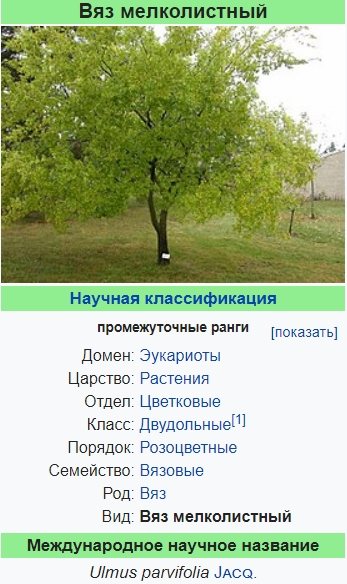

Small asymmetrical elliptical ovoid leaves with an elongated tip, 3 to 7 cm long, with a double serrated edge, sit on short stalks (0.2-0.6 cm). The leaf blade is smooth leathery, dark green above, slightly pubescent and lighter below. In autumn, its color changes to yellow-olive. In warm and mild climatic conditions, the tree does not shed its foliage for the winter, in cold regions the plant becomes deciduous.
The root system is branched and powerful, with a mass of superficial roots and separate thick rhizomes extending into the depths. Flowering begins even before foliage appears, at the very beginning of spring. The description of the flowers of the Chinese elm differs little from other varieties of this culture. They are small and inconspicuous, on short pedicels, collected in bunches in the form of a ball, 5-7 pcs. Fruits in the form of a small (about 1.5-2 cm long) unequal yellow-brown lionfish with a seed in the middle ripen in May. The leaves are small, in culture they are rarely more than 2 cm, they sit loosely on the branches, artificially curved branches are perfectly visible through them.
The indoor Chinese elm is similar to its wild-growing counterpart, but looks like its miniature counterpart. Plants seem old and ancient, as their bark not only begins to crack, but also flakes over time.
Pests
Carmona can be called a favorite target for a wide variety of insect species.It is damaged by almost all pests: mealybugs, scale insects, aphids, spider mites, whiteflies. To combat these pests, you can use actellik, fitoverm. Karmona tolerates these drugs normally (checked). For reliability, make the solution weaker, but after processing, place the pot of carmona in a large polyethylene bag for two hours. This time is enough for the pests to die. If necessary, repeat the treatment in a week.
The same treatment must be carried out in the fall, when you bring carmona into the house.
Special representatives
This type of gardening has a long history. His homeland is China and India. In Japan, bonsai appeared in the 6th century, and this art was brought by itinerant monks. Gradually, 15 styles were developed that made it possible to turn trees into beautiful miniatures.
True masters perceive the technique of creating bonsai as an opportunity to create something unique and highlight the beauty of nature. They can be grown not only from indoor plants, but also from garden plants.


Not everyone can master the art of creating dwarf compositions.
Important! Before creating a composition, a person must have a good idea of the final result.
Bonsai is an art that requires a special approach. The trunk and branches create a special charm that brings the miniature to life. Strict quality requirements are imposed on the tree.
Japanese culture
In the Land of the Rising Sun, bonsai became popular during the Tokugawa era. Then the rich people sought to create beautiful parks, and the monks - gardens. Followers of the Buddha believed that through plants they create new worlds.
Therefore, growing bonsai, a person joined God or became rich. In Japan, these trees are in great demand. Pots with them are placed in rooms and in the garden.
Tourists do not always understand what real bonsai is in Japan. In the land of the Rising Sun, this is a real art, which is subject only to true masters. In cities, such dwarf trees allow you to preserve a piece of nature in miniature apartments.
Most expensive specimen
Bonsai is a Japanese art, but it is only available to wealthy people. Each instance has to spend a lot of time. The record in this area belongs to a tree, which was sold at auction for $ 1.3 million.
Note! Street bonsai were several hundred years old. During this time, its trunk bizarrely bent, and the crown branched out beautifully.
Old bonsai
In addition to bonsai, which is the most expensive, there are also specimens that are distinguished by an impressive age. The record holder in this field is already 800 years old. The trunk is very thick and wonderfully intertwined, and the crown spreads beautifully.
Among the dwarf trees, there are also unusual representatives. One master was able to grow wisteria, which blooms beautifully. Another person not only grew a wonderful bonsai, but also created a composition for him in the form of a house for the Hobbit.
One of the most famous street bonsai artists is M. Kimura.
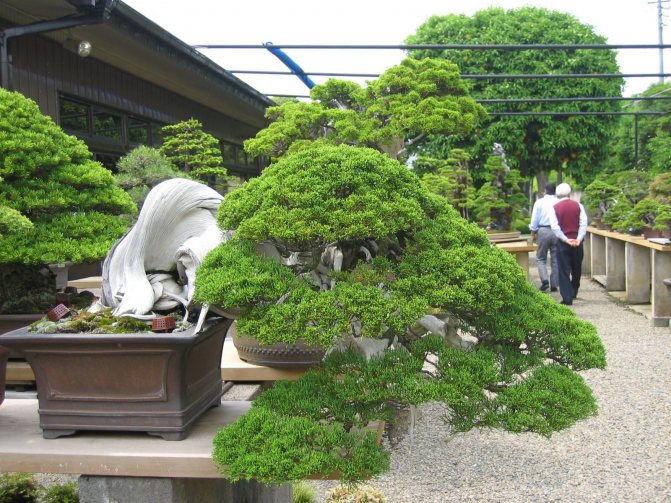

An example of a composition by a famous author
From the Japanese language, the word "bonsai" is translated as "grown in a tray." In the Land of the Rising Sun, dwarf trees are grown for apartments. Due to their flat root system, they need wide, low pots. The pallet also becomes part of the composition.
It is not necessary to know how the word "bonsai" is translated. It is important to understand how to create a composition and what to consider.
Features of purchased soil
You can buy ready-made substrate for growing bonsai in the store. Most often, the following brands can be found on the shelves:
- ASB Greenworld for cacti and bonsai;
- COMPO for bonsai Sana;
- bonsai substrate "Aurica Gardens";
- soil "Fasco" "Flower Happiness" for conifers and bonsai.
However, before making a choice, you should carefully study the composition. Very often peat becomes the main component in it.In such a soil, the plant will develop slowly, and it will not be possible to achieve a beautiful flowering plant appearance.
Good quality substrate can be purchased from foreign online stores. However, most often such products are presented without translation into other languages, so when buying, you will have to focus on pictures.
Given how many difficulties you have to overcome in order to acquire a good soil, it is easier to abandon this idea and assemble a suitable substrate yourself.
Cultivation rules
Evergreen species are very popular. Among them are Japanese cypress, Chinese juniper, cryptomeria, red Japanese pine. Deciduous trees also look very beautiful, especially with the change of seasons. It can be apple trees of different varieties, cherry, Japanese plum, rhododendron, persimmon, wild azalea, willow, wild grapes. Several styles of bonsai are practiced, which are associated primarily with a specific type of plant:
- the use of evergreens, which allows you to admire them all year round;
- spring flowers delight in the spring;
- blooming in the summer;
- plants on which flowers appear in the fall;
- special shapes of the trunk and branches that can only be truly seen after the leaves have fallen.
Having chosen a plant, it is necessary to suspend growth and form a certain shape. To achieve this, the roots are often pruned, young branches are removed, poor soil and a minimum of fertilizer are used. And also the choice of the pot plays a huge role. He must not let the roots grow. To weaken the flow of juices, make horizontal cuts or braid the trunk with wire.
After transplanting, when the plant has taken root, they begin to form the crown. To do this, cut and bend the branches using copper wire. To avoid damage from bending, place a soft washcloth under the wire. Be very careful when pruning pine trees as the damaged branch can turn yellow.
You can grow a plant yourself from seeds. And only after a year or two, you can start trimming roots, shoots, form a crown using copper wire. But it is important to take into account the fact that over the years the tree will become heavier, and if the crown is improperly formed, it can lose stability. The drainage hole can be used to support the plant.
Popular types and content rules
Different (coniferous and deciduous) plants are suitable for growing, but the most in demand are:
- European olive. It is an evergreen shrub that blooms every year. Likes: climate at temperatures from + 5 to + 18 degrees, sufficient lighting, fresh climate, clay and sand soil, moderate watering.
- Carmona or tea tree. An evergreen tree reaching up to 10 meters. Likes: warm climate and lighting.
- Chinese elm (small-leaved). Ideal for those new to this business. Likes: warmth, sun and moisture.
- Mix. Consists of different types of plants, does not require special care.


It is very easy to grow a mini flower or bonsai on your own using plants adapted to the local climate (pine, oak, juniper, etc.).


Nursing does not imply special conditions or skills. For germination, you can use seeds or prepared seedlings taken from the forest.
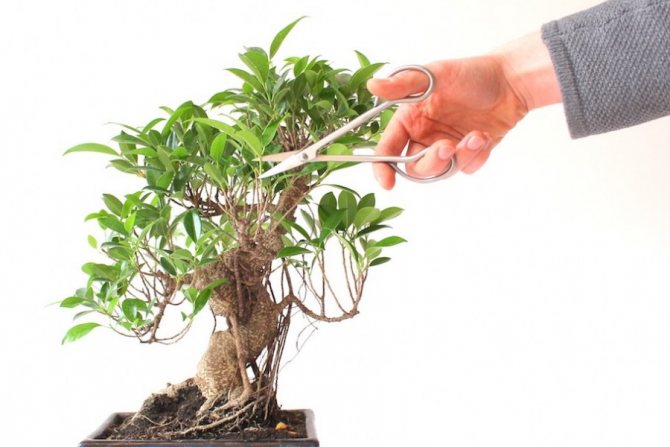

Where to see bonsai in Japan
One of the Best Places to Explore the Art of Bonsai in Japan - Bonsai Village Omiyalocated in Saitama Prefecture. The village is a bonsai nursery that was moved to Saitama from Tokyo after the Great Kanto Earthquake (1923). The village also houses a splendid bonsai art museum.
Another great place for bonsai lovers is the bonsai village in Kinasilocated in Takamatsu. Kinashi is a leading manufacturer of bonsai trees. More than 30 nurseries are located here.
Features of growing from seeds
Before proceeding with the direct sowing, the seeds must be prepared. So, the seeds of those trees that are found in temperate latitudes must be cold worked. There is nothing difficult in this, just pour sand into a small pot, slightly moisten it, and then place the seeds in it. Place the pot on the refrigerator shelf.
The seeds of those trees that grow in the tropics and subtropics need to be prepared in a different way. So, a day before sowing in the soil, they must be placed in water, which should be lukewarm.
Sowing seeds requires special soil. It should be breathable and loose. So, a substrate suitable for these purposes is obtained by mixing sand and peat. After sowing, the soil should be constantly slightly moistened, and the container with seeds should be placed in a warm place (at least 25 degrees).
After the sprouts appear, the container will need to be transferred to a cool (no more than 18 degrees), as well as a well-lit place. Moisture should be moderate. If these conditions are not met, the plant becomes weak and easily sick. A month later, young plants are planted in separate pots. In this case, you need to know that the pot should be small and shallow enough.
Plants that are suitable for growing in our environment:
- Common lilac, Hungarian lilac, White Svidina, White variegated Svidina;
- Japanese spirea, medium spirea, birch spirea, lowered spirea;
- Irga alder, European Forsythia, Common cherry, Steppe cherry;
- Siberian spruce, Colorado spruce, Gray prickly spruce, Spherical willow, Weeping willow, Ledebour willow;
- Apple-tree berry, Apple-tree Sivers, Juniper Cossack;
- Siberian larch;
- Low almonds, bean, Chubushnik varietal;
- Bubble plant is Kalinolisty;
- Viburnum ordinary, Riverine maple;
- Black cotoneaster, European euonymus;
- Ussuri pear, Hawthorn;
- Hanging birch; Barberry Thunberg;
- Purple barberry, Amur barberry.


DIY substrate step by step
For example, let's analyze the preparation of soil for deciduous plants, the recipe for which was given just above:
- Calculate how many ingredients you need to fill the pot.
- Put pumice and lava in a thin layer on a baking sheet and send to the oven, preheated to 100 ºС. This is necessary to kill all possible disease-causing microbes.
- Akadama usually comes already disinfected. It is enough to sift it to remove dust.
- Cool the pumice and lava and mix in the desired proportion with the sifted Akadama.
- Fill pots with soil.
DIY cooking
To prepare your own soil mixture for growing bonsai, it is important to adhere to the following rules:
- for deciduous rocks, two parts of baked clay are used, and one part of lava and pumice;
- for conifers, coarse river sand, leafy soil and humus are suitable, which are mixed in equal quantities;
- for growing miniature fruit plants, leafy soil and compost are used, they are taken in equal volumes;
- A bonsai that loves acidic soil grows well and thrives on a potting mix made from one part peat, one part compost, and two parts heather soil.
So, before planting a bonsai tree in one or another soil, you first need to find out which type of soil is more preferable for the tree. Thanks to the correct selection of the substrate, the ornamental plant will feel good and fully develop. When in doubt about the best soil to use, you can purchase a versatile soil from a flower shop suitable for growing bonsai.
Origin story
Asia gave the world an unusual art. The Chinese were the first to study it, but the direction gained particular popularity in Japan. The inhabitants of the country dreamed of living surrounded by cozy and healthy greenery.But the small area of the state, the lack of free territory did not allow growing trees in the desired quantities. This is how the idea appeared to change natural giants for miniature copies. For centuries, the Japanese have cultivated mini-trees in gardens, parks and streets, creating entire forests.


Experts identify several styles of art, the main ones being traditional, semi-cascading and literary. The main differences between the directions: the number, shape and appearance of the trunks, as well as the absence or presence of additional decorative elements in the composition.
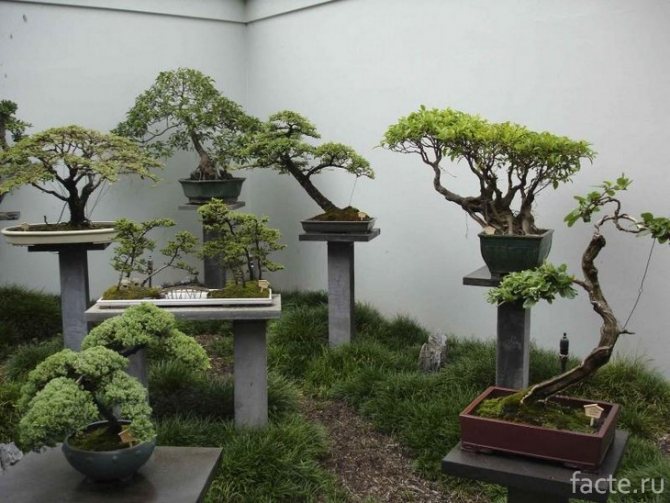

Choosing a place and method of landing
Before you start growing a dwarf tree, you need to understand exactly which place in the room for this plant is best suited. To do this, you need to consider 2 important points:
- Does it like bright light or does it need a slight partial shade.
- Where in nature it grows: in dry or humid areas.
By the way, experts do not recommend placing bonsai on the windowsill. It needs to be placed somewhere in the room. And also it is impossible that in the summertime direct rays of the sun fall on it.
Next, you need to decide what kind of soil is suitable for this particular plant.
After the ideal place and suitable soil have been found, you can start choosing a method for growing a tree. So, it can be grown from a seed or from a cuttings. However, not every plant can be grown with the help of cuttings. So, oak, cherry, pine and some other trees can be grown only from seeds.
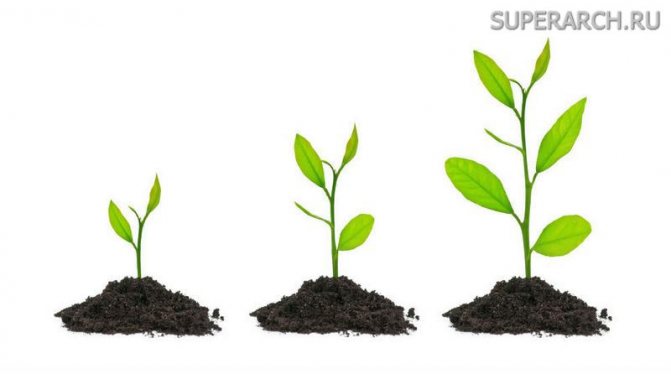

Basic set for growing bonsai
For growing a miniature tree, you can purchase a special set and not waste energy on preparing special soil or choosing a suitable pot.


The bonsai growing kit includes:
Some kits have a wire and a special pallet in their assembly. Basically - "any whim for your money."
You can buy a ready-made set in the store or order it online. In this case, you can at the same time choose any seeds you like.
Inorganic additives
Dry fillers in the soil act as leavening agents, creating air pockets and trapping moisture around the roots. Elements such as:
River sand helps to lighten the substrate. Ideally, this should be a coarse-grained screening that resembles small pebbles (as for aquariums). It is often used in mixtures for coniferous bonsai, but with Akadama, sand is practically not needed.
pesok.jpg
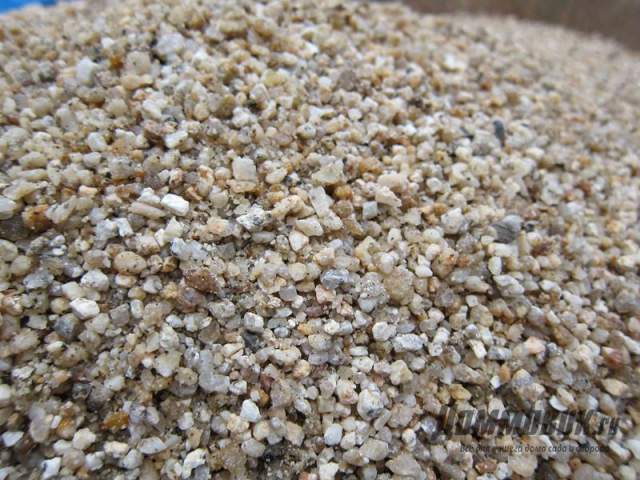

Expanded clay - porous balls of fired clay used in construction. It is an excellent drainage material, so it should be poured into the bottom of the container. Small-diameter grains can also be selected for soil mixtures. Expanded clay is not able to absorb water.
e7c8733db0ca.jpg


Pumice is a spongy volcanic rock, which is 65% silicates. It has a fairly soft structure, easily crumbles, and is moisture-absorbing.
pemza.jpg


Lava in a split form provides excellent drainage for mature trees, does not degrade over time. Small stones (2-6 mm in diameter) can be added to aerate the soil itself.
2612605.jpg


Zeolite is a crushed stone of volcanic origin, sodium and calcium aluminosilicate. Has a glass or pearlescent luster. This component absorbs and slowly releases water, and also enriches the substrate with minerals - magnesium, calcium, potassium, boron, silicon, zinc. It can be purchased separately from pet stores, as it is a popular filter filler for aquariums.
ceolit.jpg
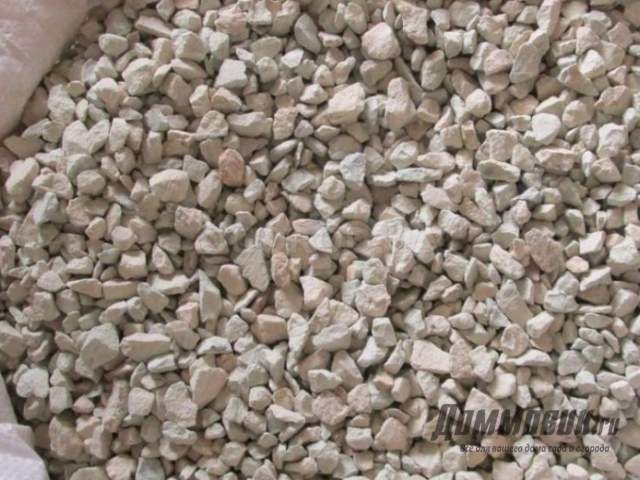

What material is suitable
Many common trees are suitable for growing a bonsai plant. The main criterion is small leaves and dense branches. The list of breeds includes more than 400 species, the most popular are: pomegranate, ficus, hawthorn, cypress, myrtle.
Usually bonsai plants live outdoors. In winter, it is worth taking additional measures so that the plant does not freeze. Many species can be adapted for indoor living.The tree is propagated by cuttings. The second method is sowing seeds, in which the results will have to wait about 15 years. This is the best option for growing an elm tree.
The substrate is chosen depending on the type of wood. Without fail, the plant requires drainage. The tree is carefully replanted twice a year. The most difficult part of bonsai formation is pruning. You must act very carefully so as not to damage the barrel. The tree is fed with garden fertilizers, algae-based products. For irrigation, it is optimal to use rainwater, you can also defend tap water.
Would you like to have such a plant at home? Share the article with your friends, make a repost!
How to grow a bonsai tree
To grow bonsai, it is enough to comply with the following conditions:
- take care of the seed for quite a long time, sometimes several years.
- take care of the sprout. Provide regular ventilation. If there are 4 leaves, it is necessary to dive, and after 2 months, feed with fertilizer. Before wintering, rearrange closer to the window and do not recharge.
- take care of the mini tree. Provide optimal light and spraying. After several years have passed, the formation process should begin.
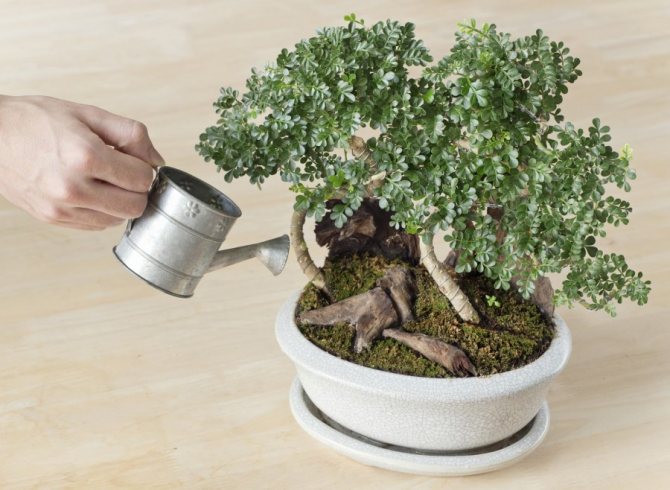

What kind of land is needed for cultivation?
It is worth remembering that trees grown in the form of bonsai do not only change the size of the trunk and branches. The root system is also undergoing changes, and is not able to function in the same way as the one that belongs to ordinary wild "brothers".
Therefore, the soil for miniature specimens should also be different and have the following properties:
- good moisture retention. It is necessary that the land remains moist between waterings;
- provide aeration. It is necessary that voids or small air pockets form in the soil in order for the roots to receive oxygen. Here beneficial microorganisms will develop, participating in the process of processing nutrients supplied to the roots of the plant. Large soil particles will help to achieve good aeration, which will not closely adhere to each other;
- have good drainage properties. Excess water is detrimental to the plant and can cause root rot. Therefore, the substrate in the pot, although it should be moistened, but not excessively.
Organic elements
Vermicompost, which is part of any fertile soil, is a combination of rotted plant residues (tops, leaves, bark, wood), animal waste (manure, humus), as well as a large number of microorganisms. They break down organic matter into trace elements available for plant roots. Mini-trees, which are less than 5-10 years old, need such nutrition, since they are undergoing active processes of development and cell division. Based on this, it is necessary to add up to 50% of the soil substrate to the soil for pre-bonsai from such components as:
Peat is a rotted mass of marsh mosses, shrubs, grasses with a very loose structure. It provides the tree with nourishment and does not interfere with the penetration of air.
torf.jpg
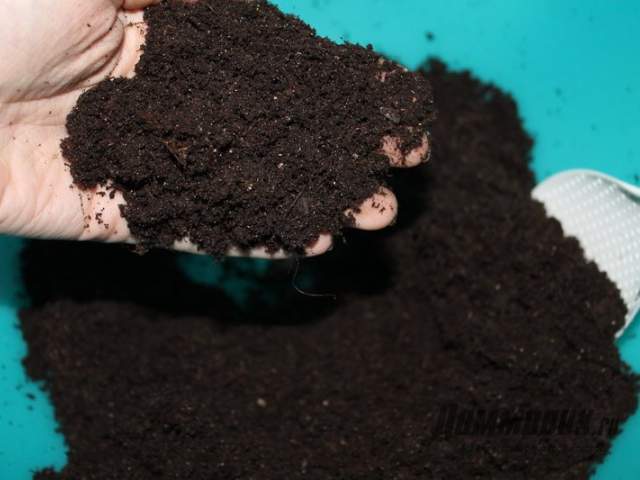

Charcoal is burnt wood that has a porous texture. Slightly acidifies the soil. It is mixed into the soil for bonsai in a small amount (5-10%), after cutting it into fragments 1-3 cm in size.
ugol.jpg
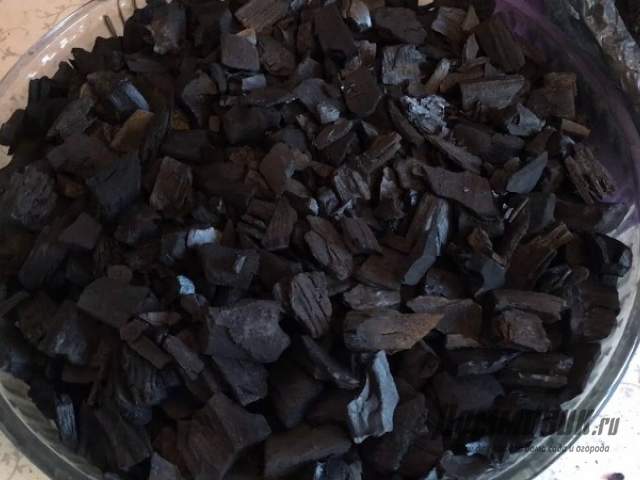

The bark of trees naturally loosens the substrate, absorbs water and decomposes rather slowly. It is better to take it from the same breed for which the mixture is being prepared.
kora.jpg
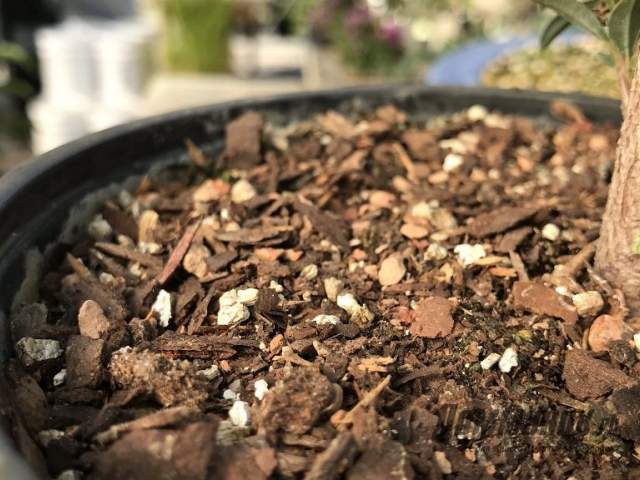

Sod land and unbaked clay should not be included in the composition of the soil. They quickly form a hard ball around the roots that cannot be soaked even by frequent watering. It is also undesirable to add humus - an excess of organic matter provokes too active growth, which can harm the indoor tree.


